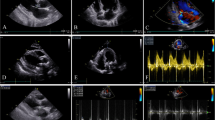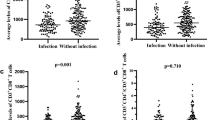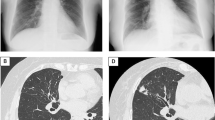Abstract
Chronic infections may mimic antineutrophil cytoplasmic antibody (ANCA)-associated vasculitides (AAV). We investigated which markers may help in the diagnosis and the prognosis of infections associated with proteinase 3 (PR3) and myeloperoxidase (MPO)-ANCA. In this study (1993–2008)—with an average follow-up of 5.1 years—we compared 66 AAV patients with 17 PR3 and/or MPO-ANCA-positive patients with protracted bacterial (11/17) or viral (6/17) infections. Seven of 17 patients had subacute bacterial endocarditis (SBE), while six of 17 patients had various autoimmune manifestations of chronic hepatitis C virus (HCV) infection. We determined ANCA, antinuclear antibodies, anti-PR3, anti-MPO, anticardiolipin (aCL), antibeta 2 glycoprotein I (β2-GP I), cryoglobulins, C3, and C4. Patients with infections were younger than AAV patients (p < 0.01). There was no difference in frequency of renal and skin lesions. AAV patients more frequently had pulmonary and nervous system manifestations (p < 0.01). Patients with infections more frequently had dual ANCA (high PR3, low MPO), aCL, anti-β2-GP I, cryoglobulins, and hypocomplementemia (p < 0.001). Immunosuppressive therapy (IST) was used in five 17 patients who had persistently high ANCA, cryoglobulinemia, and hypocomplementemia. There was no difference in frequency of lethality and renal failure in the two study groups. In patients who are PR3- and/or MPO-ANCA positive, SBE and HCV infection should be excluded. Although similar in renal and skin manifestations in comparison to AAV, only patients with infections developed multiple serological abnormalities. In patients with infections, concomitant presence of ANCA, cryoglobulins, and hypocomplementemia was associated with severe glomerulonephritis. The serological profile should be repeated after specific antimicrobial or surgical therapy, since some cases might require IST.
Similar content being viewed by others
References
Jennette JC, Falk RJ, Andrassy K et al (1994) Nomenclature of systemic vasculitides. Proposal of an international consensus conference. Arthritis Rheum 37:187–192
Kallenberg CG, Tadema H (2008) Vasculitis and infections: contribution to the issue of autoimmunity reviews devoted to “autoimmunity and infection”. Autoimmun Rev 8:29–32
Wiik A (2008) Drug-induced vasculitis. Curr Opin Rheumatol 20:35–39
Bonaci-Nikolic B, Nikolic MM, Andrejevic S et al (2005) Antineutrophil cytoplasmic antibody (ANCA)-associated autoimmune diseases induced by antithyroid drugs: comparison with idiopathic ANCA vasculitides. Arthritis Res Ther 7:1072–1081
Guillevin L, Lhote F, Gherardi R (1997) The spectrum and treatment of virus-associated vasculitides. Curr Opin Rheumatol 9:31–36
Ramos-Casals M, Jara LJ, Medina F et al (2005) HISPAMEC Study Group. Systemic autoimmune diseases co-existing with chronic hepatitis C virus infection (the HISPAMEC Registry): patterns of clinical and immunological expression in 180 cases. J Intern Med 257:549–557
Asherson RA, Cervera R (2003) Antiphospholipid antibodies and infections. Ann Rheum Dis 62:388–393
Choi HK, Lamprecht P, Niles JL et al (2000) Subacute bacterial endocarditis with positive cytoplasmic antineutrophil cytoplasmic antibodies and anti-proteinase 3 antibodies. Arthritis Rheum 43:226–231
Schmitt WH, van der Woude FJ (2004) Clinical applications of antineutrophil cytoplasmic antibody testing. Curr Opin Rheumatol 16:9–17
Chirinos JA, Corrales-Medina VF, Garcia S et al (2007) Endocarditis associated with antineutrophil cytoplasmic antibodies: a case report and review of the literature. Clin Rheumatol 26:590–595
Chou TN, Hsu TC, Chen RM et al (2000) Parvovirus B19 infection associated with the production of anti-neutrophil cytoplasmic antibody (ANCA) and anticardiolipin antibody (aCL). Lupus 9:551–554
Wu YY, Hsu TC, Chen TY et al (2002) Proteinase 3 and dihydrolipoamide dehydrogenase (E3) are major autoantigens in hepatitis C virus (HCV) infection. Clin Exp Immunol 128:347–352
Zeledon JI, McKelvey RL, Servilla KS et al (2008) Glomerulonephritis causing acute renal failure during the course of bacterial infections. Histological varieties, potential pathogenetic pathways and treatment. Int Urol Nephrol 40:461–470
Li JS, Sexton DJ, Mick N et al (2000) Proposed modifications to the Duke criteria for the diagnosis of infective endocarditis. Clin Infect Dis 30:633–638
Radice A, Vecchi M, Bianchi MB, Sinico RA (2000) Contribution of immunoflorescence to the identification and characterization of anti-neutrophil cytoplasmic autoantibodies. The role of different fixatives. Clin Exp Rheum 18:707–712
Lamprecht P, Gause A, Gross WL (1999) Cryoglobulinemic vasculitis. Arthritis Rheum 42:2507–2516
Davies DJ, Moran JE, Niall JF, Ryan GB (1982) Segmental necrotizing glomerulonephritis with antineutrophil antibody: possible arbo virus aetiology? Br Med J 285:606
Tidman M, Olander R, Svalander C, Danielsson D (1998) Patients hospitalized because of small vessel vasculitides with renal involvement in the period 1975–95: organ involvement, anti-neutrophil cytoplasmic antibodies patterns, seasonal attack rates and fluctuation of annual frequencies. J Intern Med 244:133–141
Chan B, d'Intini V, Savige J (2006) Anti-neutrophil cytoplasmic antibody (ANCA)-associated microscopic polyangiitis following a suppurative wound infection. Nephrol Dial Transplant 21:2993–2994
Popa ER, Stegeman CA, Abdulahad WH et al (2007) Staphylococcal toxic-shock-syndrome-toxin-1 as a risk factor for disease relapse in Wegener's granulomatosis. Rheumatology 46:1029–1033
Simpson IJ, Skinner MA, Geursen A et al (1995) Peripheral blood T lymphocytes in systemic vasculitis: increased T cell receptor V beta 2 gene usage in microscopic polyarteritis. Clin Exp Immunol 101:220–226
Flores-Suárez LF, Cabiedes J, Villa AR et al (2003) Prevalence of antineutrophil cytoplasmic autoantibodies in patients with tuberculosis. Rheumatology 42:223–229
Leff RD, Hellman RN, Mullany CJ (1999) Acute aortic insufficiency associated with Wegener granulomatosis. Mayo Clin Proc 74:897–899
de Corla-Souza A, Cunha BA (2003) Streptococcal viridans subacute bacterial endocarditis associated with antineutrophil cytoplasmic autoantibodies (ANCA). Heart Lung 32:140–143
Chaw HY, Buxton N, Wong PS (2004) Staphylococcal endocarditis with a ventriculo-atrial shunt. J R Soc Med 97:182–183
Haseyama T, Imai H, Komatsuda A et al (1998) Proteinase-3-antineutrophil cytoplasmic antibody (PR3-ANCA) positive crescentic glomerulonephritis in a patient with Down's syndrome and infectious endocarditis. Nephrol Dial Transplant 13:2142–2146
Pendergraft WF 3 rd, Preston GA, Shah RR et al (2004) Autoimmunity is triggered by cPR-3(105–201), a protein complementary to human autoantigen proteinase-3. Nat Med 10:72–79
Hellmich B, Ehren M, Lindstaedt M et al (2001) Anti-MPO-ANCA-positive microscopic polyangiitis following subacute bacterial endocarditis. Clin Rheumatol 20:441–443
Miranda-Filloy JA, Veiga JA, Juarez Y et al (2006) Microscopic polyangiitis following recurrent Staphylococcus aureus bacteremia and infectious endocarditis. Clin Exp Rheumatol 24:705–706
Savige JA, Nassis L, Cooper T et al (2002) Antineutrophil cytoplasmic antibody (ANCA)-associated systemic vasculitis after immunisation with bacterial proteins. Clin Exp Rheumatol 20:783–790
Hurtado PR, Jeffs L, Nitschke J et al (2008) CpG oligodeoxynucleotide stimulates production of anti-neutrophil cytoplasmic antibodies in ANCA associated vasculitis. BMC Immunol 9:34. doi:10.1186/1471-2172-9-34
Papayannopoulos V, Zychlinsky A (2009) NETs: a new strategy for using old weapons. Trends Immunol 30:513–521
Lamprecht P, Schmitt WH, Gross WL (1998) Mixed cryoglobulinaemia, glomerulonephritis, and ANCA: essential cryoglobulinaemic vasculitis or ANCA-associated vasculitis? Nephrol Dial Transplant 13:213–221
Igaki N, Nakaji M, Moriguchi R et al (2000) A case of hepatitis C virus-associated glomerulonephropathy presenting with MPO-ANCA-positive rapidly progressive glomerulonephritis. Nippon Jinzo Gakkai Shi 42:353–358
Zuckerman E, Slobodin G, Kessel A et al (2002) Peripheral B-cell CD5 expansion and CD81 overexpression and their association with disease severity and autoimmune markers in chronic hepatitis C virus infection. Clin Exp Immunol 128:353–358
Neumann I, Regele H, Kain R et al (2003) Glomerular immune deposits are associated with increased proteinuria in patients with ANCA-associated crescentic nephritis. Nephrol Dial Transplant 18:524–531
Tiliakos AM, Tiliakos NA (2008) Dual ANCA positivity in subacute bacterial endocarditis. J Clin Rheumatol 14:38–40
Chen YX, Yu HJ, Ni LY et al (2007) Propylthiouracil-associated antineutrophil cytoplasmic autoantibody-positive vasculitis: retrospective study of 19 cases. J Rheumatol 34:2451–2456
Fukuda M, Motokawa M, Usami T et al (2006) PR3-ANCA-positive crescentic necrotizing glomerulonephritis accompanied by isolated pulmonic valve infective endocarditis, with reference to previous reports of renal pathology. Clin Nephrol 66:202–209
Yang JJ, Tuttle RH, Hogan SL et al (2000) Target antigens for anti-neutrophil cytoplasmic autoantibodies (ANCA) are on the surface of primed and apoptotic but not unstimulated neutrophils. Clin Exp Immunol 121:165–172
Muller Kobold AC, van der Geld YM, Limburg PC et al (1999) Pathophysiology of ANCA-associated glomerulonephritis. Nephrol Dial Transplant 14:1366–1375
Kessenbrock K, Krumbholz M, Schönermarck U et al (2009) Netting neutrophils in autoimmune small-vessel vasculitis. Nat Med 15:623–625
Lande R, Gregorio J, Facchinetti V et al (2007) Plasmacytoid dendritic cells sense self-DNA coupled with antimicrobial peptide. Nature 449:564–569
Neeli I, Khan SN, Radic M (2008) Histone deimination as a response to inflammatory stimuli in neutrophils. J Immunol 180:1895–1902
Csernok E, Lamprecht P, Gross WL (2010) Clinical and immunological features of drug-induced and infection-induced proteinase 3-antineutrophil cytoplasmic antibodies and myeloperoxidase-antineutrophil cytoplasmic antibodies and vasculitis. Curr Opin Rheumatol 22:43–48
Acknowledgment
Supported by the Ministry of Science of the Republic of Serbia, grant no. 145032.
Disclosures
None.
Author information
Authors and Affiliations
Corresponding author
Rights and permissions
About this article
Cite this article
Bonaci-Nikolic, B., Andrejevic, S., Pavlovic, M. et al. Prolonged infections associated with antineutrophil cytoplasmic antibodies specific to proteinase 3 and myeloperoxidase: diagnostic and therapeutic challenge. Clin Rheumatol 29, 893–904 (2010). https://doi.org/10.1007/s10067-010-1424-4
Received:
Revised:
Accepted:
Published:
Issue Date:
DOI: https://doi.org/10.1007/s10067-010-1424-4




